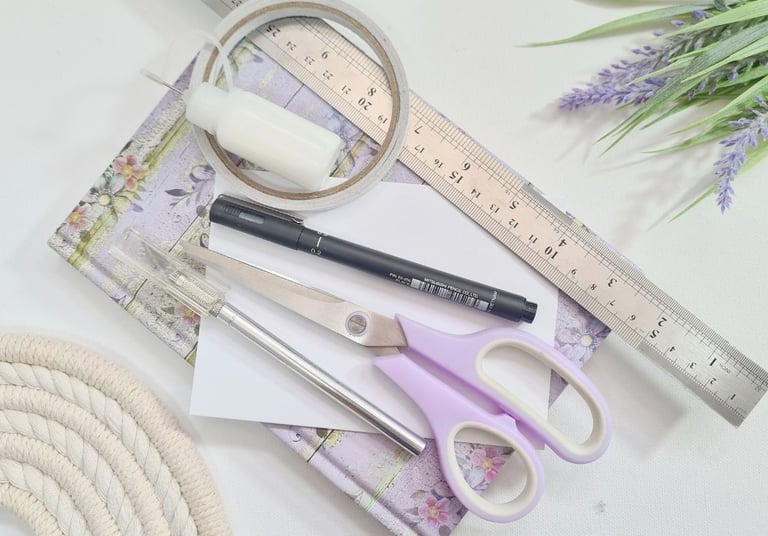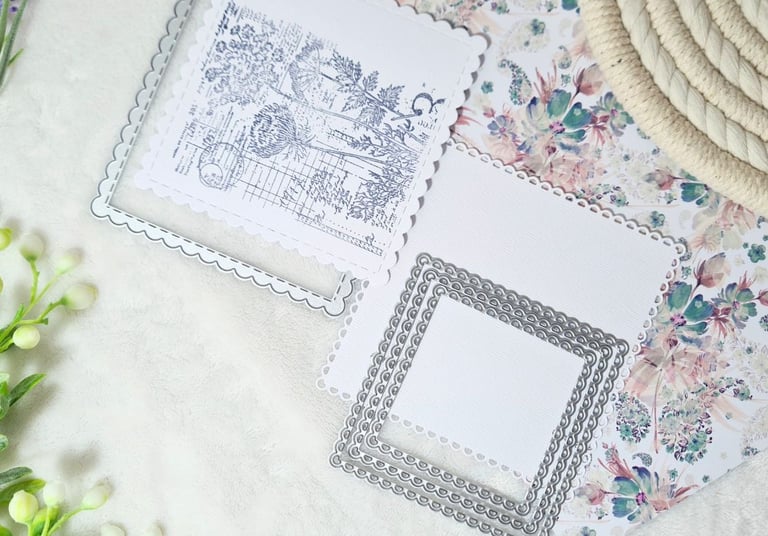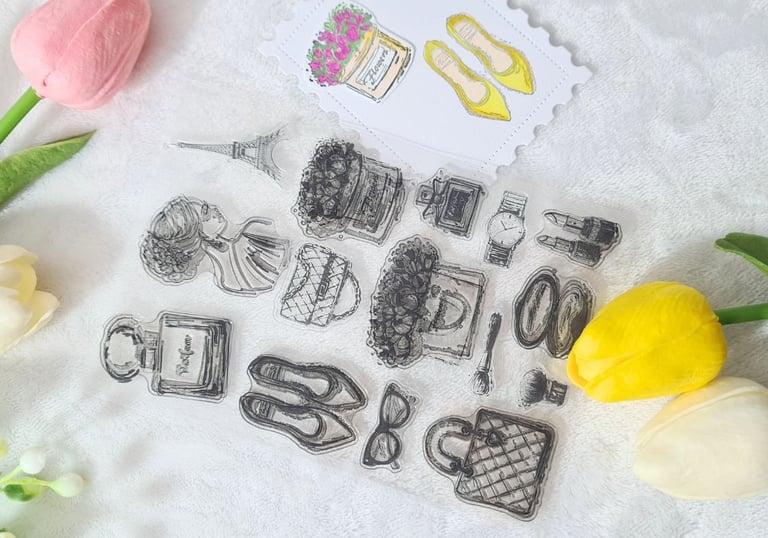Beginner's Guide to Stamps - Rubber Stamps vs. Silicone Clear Stamps
Due to a family gathering and a trip to Prague with my family (we stayed in Andel, of course), I wasn't able to write my usual Tuesday blog post last week. Today, I'm back to my creative work and have decided to focus on the topic of stamps - types of stamps and their comparison with pros and cons for each of them. If you decide to read this blog post untill the end, you will be also able to see how do they work in reality and which one are my favorite.
3 types of stamps
Stamping is a beloved craft that offers endless possibilities for creativity, whether you're making cards, scrapbooking, or adding a personal touch to your projects. With so many types of stamps available, choosing the right one can be overwhelming. In this guide, I'll compare three popular types: wooden rubber stamps, silicone clear stamps, and cling stamps.
Wooden rubber stamps
When I started card making as a hobby, the first stamps I had were wooden rubber stamps since they were the only one that I was able to buy in a craft store in my town. Wooden rubber stamps have a rubber imprint attached to a wooden block, providing durability and a classic feel that many crafters love.
Silicone Clear Stamps
Silicone clear stamps have revolutionized the world of stamping. These modern stamps have quickly become a favorite among crafters for their unique features and versatility. Whether you are a beginner or an experienced crafter, silicone clear stamps offer a unique stamping experience that can elevate your creative projects.
Cling stamps
Cling stamps, also known as cling foam rubber stamps, offer a unique blend of traditional rubber stamping with added flexibility and convenience. These stamps have a rubber design mounted on a foam that is sticky on one side, allowing them to be used without a permanent wooden block.
pros
Durability: Wooden rubber stamps are incredibly durable and can last for many years. Some of my rubber stamps are over 10 years old.
Detail: They offer excellent detail and are ideal for intricate designs, especially with wedding themes. Rubber stamps have sharper edges, which allow for thin and clean lines.
Traditional Feel: They have a classic, timeless feel that many crafters love.
Cons
Precision: My biggest complaint about rubber stamps is regarding precision. They do not have a transparent background, so positioning can be tricky since you can't see through the stamp. Additionally, due to their wooden block, they can't be used with a stamping pad, making it impossible to correct mistakes if you applied uneven pressure or failed to align the stamp properly.
Cost: They tend to be more expensive due to their durability and materials.
Storage: They are bulkier and require more storage space than other stamps.
Be aware: Depending on the quality, and terms of storage, rubber stamps can sometimes detach, especially at the corners. This can cause the corners to bend and leave unwanted marks on your project. It's impossible to avoid inking these bent corners, which can be quite frustrating.
Pros
Precision: Silicone clear stamps are transparent, allowing for a level of precision and ease of use that is unmatched. You can have precise placements, perfect for detailed projects. They can be used with stamping precision pad which gives you the ability to correct mistakes like uneven pressure.
Storage: They are compact and can be stored in small spaces, easily organized, as they often come in flat sheets.
Affordability: Generally, they are more affordable than traditional rubber stamps.
Versatility: They adhere to acrylic blocks and stamping pads, making them interchangeable and versatile.
Cons
Durability: Over time, silicone stamps can lose their stickiness and may not adhere well to acrylic blocks and stamping pads. This has happened to me a few times, so I used double-sided tape to make them stick.
Ink Absorption: They can stain easily, particularly with darker inks, though this doesn't typically affect performance.
Detail Limitations: They might not capture fine details as crisply as rubber stamps. Some clear stamps have slimmer lines while others do not, so pay attention to this when buying them.
Be aware: If not stored properly, silicone stamps can become difficult to peel from the sheet, and pulling too hard can distort them.
pros
Versatility: The sticky foam allows for easy attachment to acrylic blocks or stamping pad, providing the flexibility to switch between different stamps quickly and also allowing you to correct mistakes.
Storage: Without the bulk of a wooden block, these stamps are more compact and easier to store, saving valuable space in your craft area.
Cost-Effective: Typically, they are more affordable than traditional wooden rubber stamps due to the absence of a permanent block.
Detailed Impressions: Like traditional rubber stamps, cling stamps provide high-quality, detailed impressions, making them ideal for intricate designs and professional-looking results.
Ease of Positioning: While not as transparent as silicone stamps, cling stamps offer better visibility than wooden-mounted stamps, aiding in more precise placement.
Cons
Durability: The cling foam backing can lose its adhesive quality over time, making it less reliable in terms of staying attached to the acrylic block during use.
Cleaning: Cling stamps require careful storage to maintain the adhesive quality of the cling foam. If not stored properly, the cling foam may attract dust, making them harder to clean and reducing their stickiness.
Precision: While they offer better visibility than wooden stamps, they still do not provide the full transparency of silicone stamps, which can make precise placement a bit more challenging.
Handling: Improper storage or handling can cause the foam to deform or tear and rubber to bend, reducing the stamp's effectiveness.
Conclusion
Each type of stamp has its own unique benefits and drawbacks. Silicone clear stamps are great for beginners or those who need precise placement and easy storage. Wooden rubber stamps are ideal for those who value durability and detailed designs, despite their higher cost and storage needs. Cling stamps offer a middle ground with good detail and durability at a slightly lower cost but still pose precision challenges.
This photograph shows examples of using each of the mentioned stamps. As you can see, the wooden stamps have clean and thin lines but they left an uneven impression, which I couldn’t fix because they can’t be used with a stamping pad. When this happens, I either correct the lines with an ink pen or start over.
Regarding the cling stamps, this particular wedding set had been sitting in the store for a long time, causing it to bend and produce an uneven impression. You might wonder why I bought it if I knew it had been there for so long. The simple reason is that I needed wedding stamps at that moment, and despite the flaws, I managed to create the card I wanted, which will be featured in an upcoming blog post.
Finally, we come to my favorites, the silicone stamps. While they can sometimes have the issue of too much ink in one area (but it can be fixed), I consider them the best choice for card making due to their simplicity and quality of impressions.
Ultimately, the best choice depends on your personal preferences and the nature of your projects. Happy stamping!






